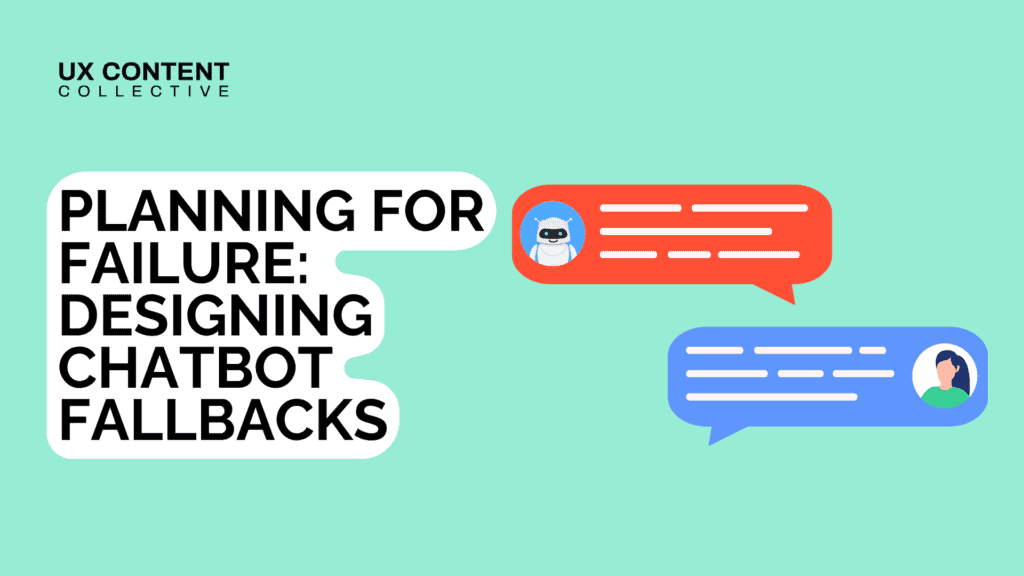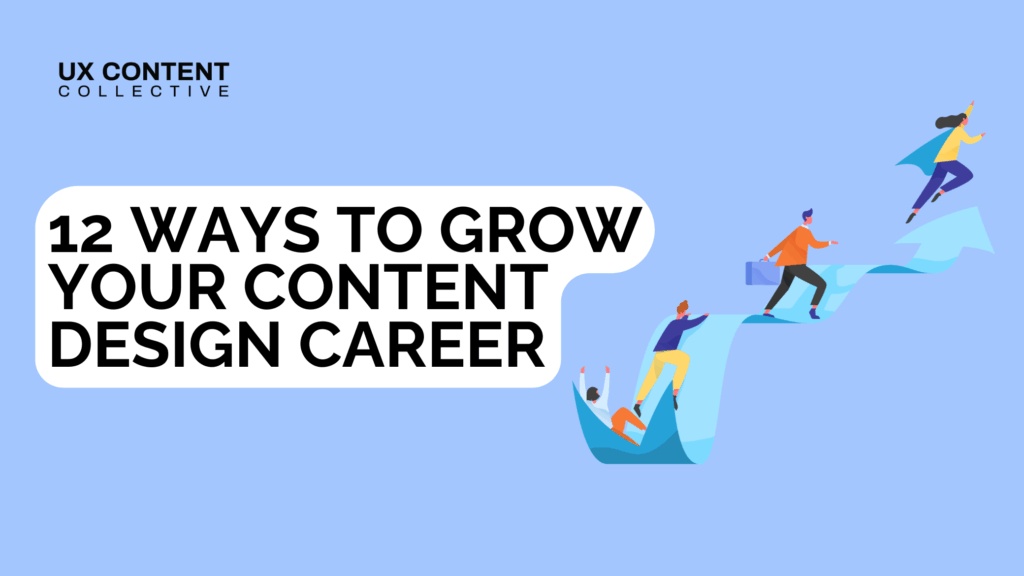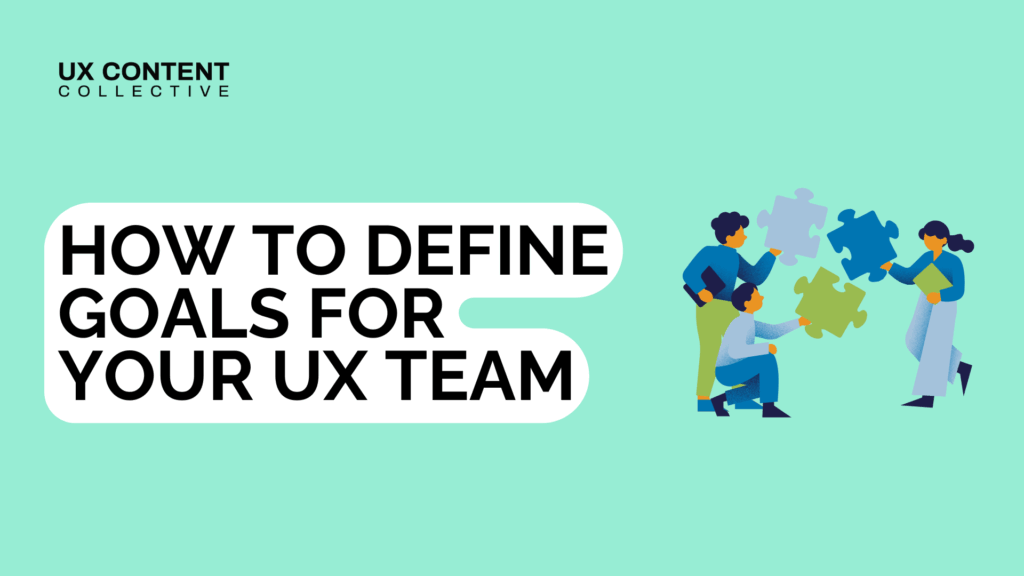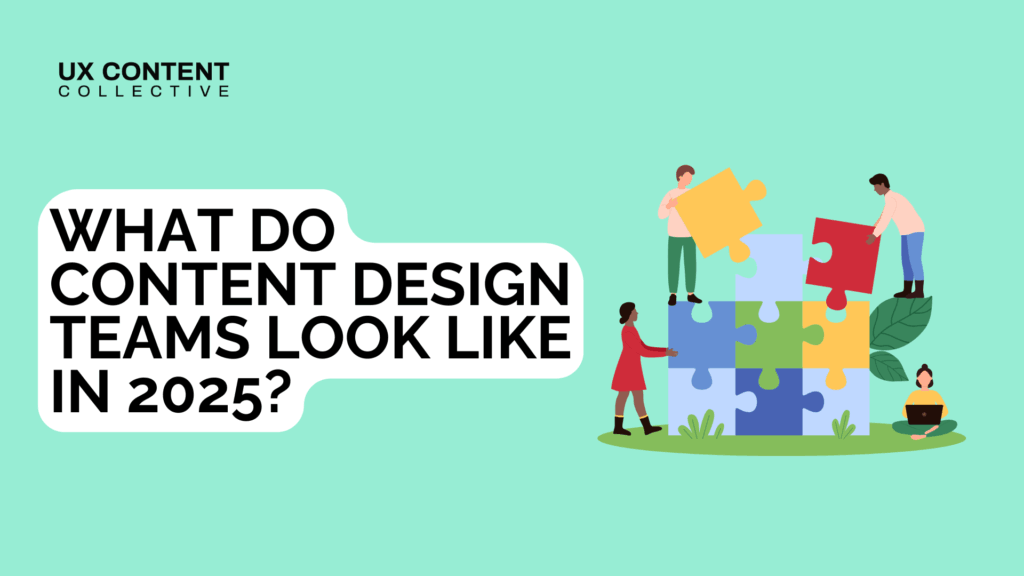
12 ways to grow your content design career
Patrick Stafford

Ready to advance your UX content skills?
Take the next step for content designers and UX writers: enroll in Advanced UX Content for Product.

Creating a content design career doesn’t come with a checklist. For many content designers, the early years are about honing craft: writing clear, usable copy, aligning voice across flows, and collaborating closely with designers and researchers.
That foundation matters. But at some point, polishing microcopy stops being the challenge. The real growth begins when you’re navigating ambiguity, shaping product direction, and influencing systems that reach far beyond the words on the screen.
If you’ve ever felt stuck in late-stage copy reviews, wondered how to get upstream, or asked yourself how to drive more meaningful impact, this is for you.
The content professionals who move into lead roles, shape roadmaps, and influence strategy aren’t doing it through flawless string reviews. They’re doing it by operating with systems awareness and cross-functional fluency.
Let’s dive in.
1. Shift from execution to strategy
Strong writing is the baseline. If you’re aiming for senior roles in content design, it’s already assumed you can deliver clear, effective copy. What hiring managers want to see is how you think, how you influence, and how you operate when there isn’t a brief or a defined process.
Consider a scenario: a team is tasked with launching a new identity verification flow. The project comes with a few early mocks, a vague list of requirements, and some compliance-driven language handed down from legal.
A junior content designer might focus on rewriting the labels, clarifying the error messages, and cleaning up the help text. That’s valuable work, but a strategic content designer asks questions:
- Where does this moment sit in the larger journey?
- What are the failure points, and what happens if the user walks away?
And they take notice of bigger problems at play:
- They notice that the current flow assumes users will understand why they’re being asked for certain data, but never explains it.
- They push to include context upfront, helping reduce friction and support trust.
- They notice that the error handling is fragmented across systems, and bring engineering and support into the conversation.
- They flag that the tone of voice doesn’t match the rest of the product, and initiate a broader review of the language used in security contexts.
It’s important to note that not all of these observations can be fixed immediately (and there’s nothing worse than working with colleagues who delay urgent work by always focusing on “the bigger picture”), but knowing these greater causes is crucial. Being able to fix one or two shows initiative.
> How to measure content ops maturity in your organization
2. Think in systems, not just screens
Systems thinking in content design careers means recognizing how decisions made in one part of the product affect others.
Imagine a fintech team working on a feature to explain credit limits to users. The new feature introduces an updated definition and a slightly different term: “spending buffer.” At first glance, it seems like a reasonable naming decision.
But every new term introduces new concepts, and new cognitive load. Introducing such a term means having to zoom out and see how that concept is communicated across the entire product.
Your content design career depends on this type of thinking. The ability to identify those relationships, influence stakeholders, and drive pattern alignment is what sets apart senior content designers—not just as writers, but as designers of how information works at scale.
> Learn how to think in systems
3. Understand the product ecosystem
To influence how a product works, you need to understand what’s under the hood. That doesn’t mean you need to know how to code, but it does mean you need to know how the product is built, how content moves through it, and what technical constraints shape the user experience.
A lot of content design problems aren’t copy problems. They’re system problems. Words show up too late, or break in translation, or can’t be updated without a release cycle. If you don’t understand the architecture, you can’t plan for those constraints, and your well-crafted content may never reach the user as intended.
This kind of awareness starts with questions: Where is the content stored? Can it be localized? How is it updated? Are there character limits? Is this string hardcoded, or dynamic, or driven by logic from another system?
A content design career is built on this trust. Engineers respect that you’re thinking about maintainability. PMs trust you to flag risks early. Designers bring you in upstream because they know you can design within real constraints. That’s what makes you not just a contributor, but a partner.
> How content deisgners can and should use JSON files
4. Collaborate across functions
One of the clearest signs of growth is your ability to collaborate effectively with people outside your discipline, especially when the work is messy, the priorities are unclear, or the timelines are tight.
That trust is earned over time, but it often starts in moments of uncertainty. Consider a content designer working with a product team that’s redesigning a complex settings dashboard. Early wireframes are vague, the information architecture is unclear, and the product manager wants to “just clean it up and make it easier to use.” There’s no content brief, no clear success metrics, and the engineer is already asking for final strings.
Rather than waiting for clarity, the content designer steps in. They facilitate a working session to map out what users need to do on the page. They help the team define the primary tasks, group related actions, and surface edge cases that hadn’t been considered.
They work closely with engineering to understand what’s technically feasible, and with research to validate assumptions. Along the way, they document their thinking, highlight trade-offs, and align the team around a shared narrative.
It’s not always appropriate to do this, and you shouldn’t just move in where people are already doing work – otherwise you’ll be accused of putting your hands where they don’t belong.
But if there’s an opportunity gap? Content should take it.
5. Lead through ambiguity
As you grow in your content design career, the problems you’re asked to solve become less defined. You’ll be brought into projects without clear requirements, without a known solution, and sometimes without full agreement on what the problem even is. It’s a mistake to view this as a “gap” in the process, because this is essentially the job.
Leading through ambiguity means helping teams make progress when the path forward isn’t obvious. It’s not about having all the answers. It’s about asking better questions, framing the problem clearly, and giving the team a starting point.
Imagine a team exploring a new feature that blends AI-generated insights with user actions. There’s no reference point, no agreed-upon terminology, and no clarity yet on what success looks like. The product manager has a vague idea. The designer has a loose concept. And everyone is waiting to see what content can do with it.
A senior content designer steps in and starts mapping the unknowns:
- What do users need to understand at each point in the flow?
- What assumptions are baked into the current design?
- What risks exist if users misunderstand the system?
Strategic content designers bring structure to the uncertain. They create working briefs where none exist, surface gaps early, and turn scattered ideas into direction.
6. Scale quality across teams
As your influence grows, so does the scope of your responsibility.
At scale, quality means designing systems that help others write better. It means creating shared standards, reusable patterns, and workflows that make good content easier to produce and maintain even when you’re not in the room.
Picture a content designer supporting four product teams across a growing platform. The design org is expanding quickly, and content is becoming fragmented. Button labels vary. Error messages contradict each other. And none of the teams are aware they’re creating inconsistencies.
Rather than correcting each instance manually, the content designer audits the terminology, gathers examples from across the product, and identifies key moments where clarity is breaking down. They create a content pattern library inside the design system and document the preferred terms, usage rules, and rationale. Then they hold a working session with PMs and designers to walk through the new patterns and explain how to apply them.
Teams now have a source of truth. Engineers understand which components pull from shared strings. Designers stop reinventing content patterns from scratch. And the user experience becomes more consistent, even when multiple teams are shipping work in parallel.
> Creating a copy single source of truth
7. Use heuristics and audits to measure quality
As you grow into more senior roles, one of the most powerful ways to increase your influence is to make quality measurable.
This is where heuristics and audits come in. A heuristic evaluation gives you a consistent way to assess flows across clarity, guidance, consistency, and other principles. A content audit helps you zoom out and see patterns: what terms are being reused inconsistently, where the user journey is breaking, or how voice and tone shift between features.
When you can show where clarity breaks down, and back it up with evidence, your recommendations carry more weight—and your role becomes a key driver of product quality.
> How to conduct a product content audit
8. Advocate for content design in strategic decisions
Consider a content designer who’s been asked to review a late-stage onboarding flow for a new feature. The flow is functional, but it’s overloaded with friction: explanations, tooltips, error states, disclaimers. The designer could patch the language and move on. Instead, they step back and ask: why is this experience so complicated in the first place?
They walk the team through the current user journey, point out where understanding breaks down, and suggest a different approach by simplifying the feature’s initial configuration and deferring certain choices until later. They sketch an alternate flow, not as a final solution, but as a provocation. And the team listens, because the proposal reduces complexity.
That shift moves content from output to input. Now, instead of retrofitting language, the designer is shaping how the feature works. They’re influencing scope. They’re improving UX by improving the underlying logic, not just the phrasing.
Real life is never usually this simple, and you’ll run into roadblocks (and interpersonal issues). But taking charge means doing something.
This kind of strategic presence is earned over time. So start earning it.
9. Build for structured and dynamic content
Structured content is content that’s intentionally broken down into reusable components. Think titles, labels, descriptions, and dynamic variables, all governed by systems that manage how, when, and where that content appears. For senior content designers, this kind of thinking is critical because structure shapes how content performs at scale.
Take the example of a team designing a new personalization engine for an e-commerce platform. The idea is to tailor the experience based on user behavior, location, and past purchases. But the early prototypes are chaotic. Every card is slightly different, tone shifts depending on the team that wrote it, and the UI is breaking under the weight of one-off decisions.
The content designer steps in. They define content types and metadata requirements. They work with engineers to set up character limits, fallback logic, and localization flags. They partner with design to establish modular messaging patterns that adapt across surfaces. And they create authoring guidelines to help marketers and product teams write within the system without breaking consistency.
The more complex the product, the more important structured content becomes. And the content designers who can define those structures, not just write within them, are the ones shaping how products behave, not just how they sound.
10. Stay ahead of AI’s impact on content design
AI introduces ambiguity that can’t be solved with copy alone. It affects trust, expectations, and usability at a system level. That means content designers need to shape the rules, logic, and behaviors behind the interface.
Consider a team building an AI-powered assistant for a complex SaaS product. The assistant needs to answer user questions, suggest features, and respond conversationally. On the surface, it seems like a writing problem. But the real issues are systemic. What should the assistant do when it doesn’t know the answer? How do we prevent hallucinations? How do we maintain voice and tone when the model generates the output?
A senior content designer works with data scientists to design prompts. They define fallback logic and escalation pathways. They build evaluation rubrics to assess output quality, tone alignment, and content safety. And they surface risks early, asking questions about user trust, model bias, and what happens when the system fails.
Content designers who understand structured inputs, prompt design, and AI behaviors are increasingly being pulled into LLM evaluation training, qualitative output review, and product strategy discussions that never used to involve UX writing.
The designers who learn how to operate in this new environment, bringing clarity, structure, and ethical foresight – along with informed skeptical pushback – will thrive.
> What does AI-first mean for content designers?
11. Show strategic thinking in your portfolio
At a certain point in your content design career, it’s not enough to show that you can write well. Hiring managers want to understand how you think, how you navigate complexity, influence direction, and contribute to outcomes that go beyond the words on the screen.
Your portfolio is your chance to show that. But to do that well, it needs to reflect more than polished UI copy. It needs to reveal your role in shaping the product.
That doesn’t mean sharing confidential documents or inflating your contributions. It means telling the story behind the work:
- What was the problem?
- Where was the ambiguity?
- What decisions did you influence?
- How did you collaborate, reframe, or simplify?
- What changed because of your work?
A strong portfolio at the senior level is a reflection of your decision-making, your systems awareness, and your ability to lead others through complex content problems.
> Tips for your UX writing portfolio
12. Invest in mentorship and continuous growth
Mentorship goes both ways. Learning from more experienced practitioners can help you see blind spots, challenge your assumptions, and expand your toolkit. Mentoring others does the same. When you explain your thinking, guide someone through ambiguity, or help a teammate work through a problem, you refine your own perspective. You notice patterns in your process. You sharpen your instincts.
Outside of one-on-one mentorship, growth can come from coaching, community, and honest reflection. Maybe that means regular check-ins with a content design career coach. Maybe it’s staying active in content design communities, where you can see how others are solving similar problems.
Maybe it’s setting time aside each quarter to review your own projects and ask: What worked? What didn’t? What would I do differently next time?
You grow in relationships with others, with your past work, and with the questions you’re still figuring out. That mindset is what sets apart content designers who stay relevant, trusted, and resilient.
Make your content design career shift
Every section in this guide points to the same core truth: advancing your content design career means operating at a higher level of abstraction. It means designing for scale, leading through ambiguity, and making decisions that improve the product, even when the deliverable isn’t a string.
If you’re ready to step into that kind of work, you don’t have to figure it out alone. Our Advanced UX Content for Product course is built for content designers who are ready to grow. It’s full of real-world frameworks, strategic tools, and examples from experienced practitioners who’ve already made the leap.



